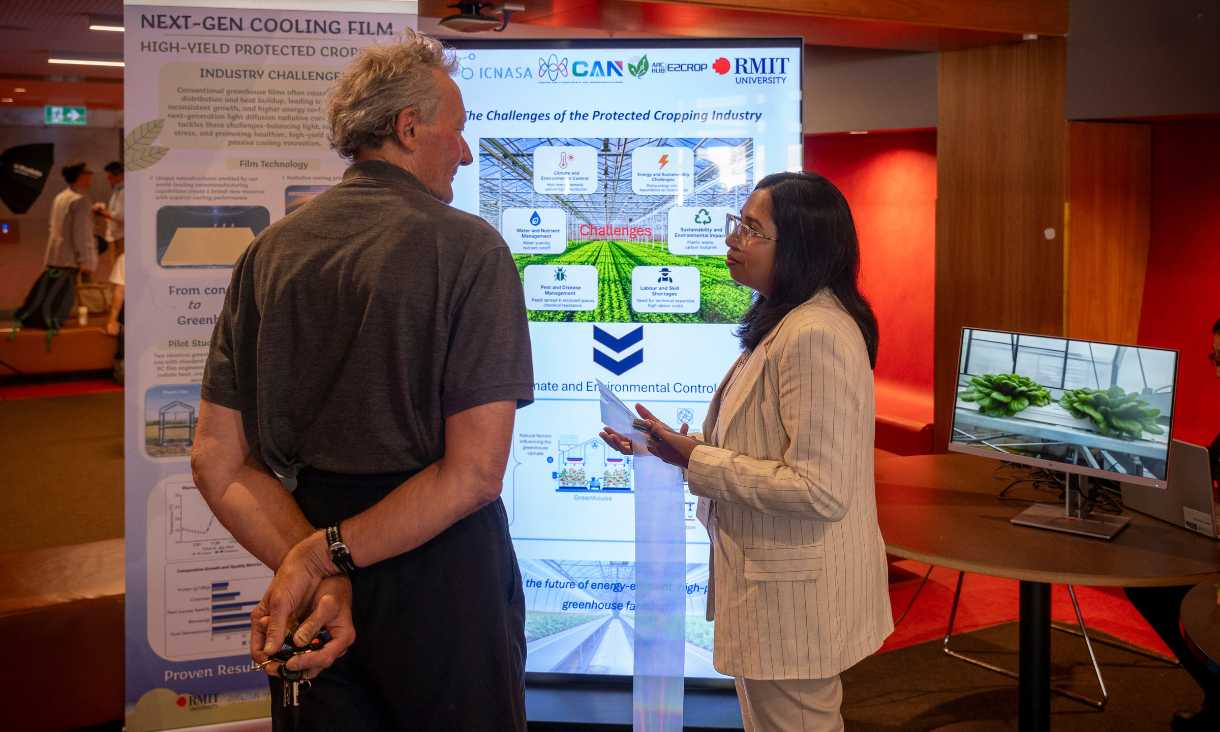Key Takeaways
- RMIT University has launched the ARC Research Hub for Intelligent Energy Efficiency in Future Protected Cropping (E2Crop Hub).
- The five-year initiative includes researchers from three partner universities and 12 industry collaborators.
- The Hub is supported by $25 million in total funding, including $5 million from the Australian Research Council.
- Research focuses on renewable energy, plant optimisation, and intelligent cropping systems.
- The goal is to develop energy-efficient, intelligent greenhouse solutions to support the future of protected cropping in Australia.
RMIT University Announces New ARC-Supported Research Hub
RMIT University has launched the E2Crop Hub, a major research initiative aimed at advancing sustainable protected cropping through intelligent and energy-efficient greenhouse technologies. Supported by the Australian Research Council (ARC), the Hub focuses on developing next-generation solutions in renewable energy, plant performance, and automated monitoring for controlled-environment agriculture.
Led by RMIT University, the Hub brings together researchers from The Australian National University, Western Sydney University, and The University of New South Wales, forming a national consortium dedicated to transforming greenhouse production systems.
Industry Collaboration to Develop Energy-Smart Greenhouse Innovation
Over the next five years, the E2Crop Hub will collaborate with 12 industry partners to design and deploy technologies that enable greenhouses to become self-sustaining, cost-effective, and powered by renewable energy. The Hub will also work on advanced decision-making tools to help growers operate more efficiently.
Industry partners span energy, materials, photonics, water management, advanced manufacturing, and protected cropping sectors. Participating organizations include Innofocus Photonics Technology, South East Water, ClearVue Technologies, Vecor Technologies, GreenPlus, Protected Cropping Australia, and Evident Australia.
The Hub is backed by $25 million in combined commitments, consisting of:
- $5 million ARC funding
- $5 million industry co-investment
- Additional cash and in-kind contributions from participating partners
RMIT University Leadership Highlights Need for Sustainable Protected Cropping
Distinguished Professor Tianyi Ma, Director of the E2Crop Hub, emphasized the critical role of collaboration in advancing agricultural sustainability.
“The E2Crop Hub brings together leading research capabilities from RMIT University, The Australian National University, Western Sydney University and The University of New South Wales,” he said. “This expertise is paired with innovative industry leaders across materials, energy, photonics, and protected cropping.”
He noted that global pressures make innovation urgent.
“The world urgently needs smarter and more sustainable ways to grow food. Protected cropping—including high-tech greenhouses and vertical farming—will play a critical role in future food production. But these systems are energy intensive. To scale sustainably, agriculture must embrace intelligent, energy-efficient innovation.”
Three Research Themes Driving the Hub’s Mission
1. Renewable Energy
This theme focuses on reducing the large energy demands of greenhouse microclimate control, including lighting, temperature, humidity, and CO₂ regulation. The Hub aims to build intelligent systems that adapt dynamically to environmental changes while minimizing energy usage.
2. Plant Optimisation
Researchers will work to enhance crop yield, nutrition, and overall plant performance by:
- Tailoring nutrient and CO₂ delivery
- Implementing precise microenvironment adjustments
- Improving consistency and productivity across controlled environments
3. Intelligent Cropping
The final theme integrates AI, IoT, and big data to support responsive and self-regulating greenhouse ecosystems. Real-time monitoring and predictive analytics will enable growers to make proactive decisions, streamline operations, and optimize resource use.


